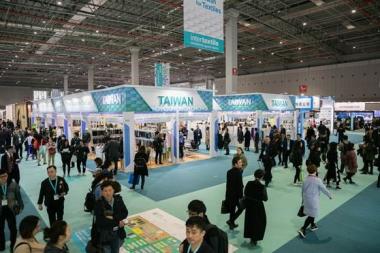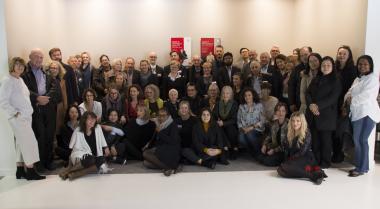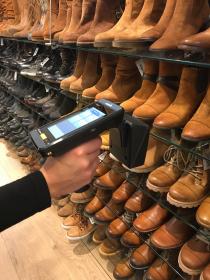Shopping 2025: Die neue Macht der Kunden
- GS1 Germany, PwC und rheingold institut entwickeln sieben Szenarien für die Konsumgüterbranche im Jahr 2025
- Erstes Szenario fokussiert zukünftiges Einkaufsverhalten: immer, alles, sofort, bequem, preiswert, State of the Art
- Lösungswege und Handlungsempfehlungen für Unternehmen
Das Jahr 2025: digitale Sprachassistenten, selbstfahrende Autos, das Ende traditioneller Einkaufszeiten. Omni-Channel ist Standard und künstliche Intelligenz im Alltag der Verbraucher angekommen. Shopping 4.0 passiert überall und zu jeder Zeit. „Unternehmen der Konsumgüterwirtschaft stehen vor der Herausforderung, sich in wenigen Jahren grundlegend zu transformieren“, sagt Studienleiter Klaus Vogel, Innovationsmanager bei GS1 Germany. „Der Kunde mit seinem steigenden Bedürfnis nach individuellem und gleichzeitig einfachen, schnellen Einkaufen steht so stark wie nie zuvor im Mittelpunkt der Entwicklungen. Wem es nicht gelingt, ihn mit seinen Produkten, Angeboten und Services zu überzeugen, verliert.“ Doch wie genau sieht das Einkaufsverhalten der Zukunft aus? Und wie können Unternehmen sich auf die Herausforderungen einstellen? Das beleuchten GS1 Germany, die Wirtschaftsprüfungs- und Beratungsgesellschaft PwC und das rheingold institut im ersten von insgesamt sieben Teilen der gemeinsamen Zukunftsstudie „2025: Smart Value Networks“.
Shoppertypen adé
„Der Shopper der Zukunft ist sich seiner Möglichkeiten bewusst und hat hohe Ansprüche an die Unternehmen seiner Wahl“, sagt Sebastian Buggert, Mitglied der Geschäftsführung und CIO am rheingold institut. „Treiber für diese Entwicklung sind vor allem komplexe Wechselwirkungen zwischen technologischen und gesellschaftlichen Entwicklungen sowie die daraus resultierenden Erwartungen der Menschen.“ So wünscht sich der Verbraucher der Zukunft auf der einen Seite Individualität, Orientierung und Sicherheit in einer hochkomplexen und digitalisierten Welt. Denn die Produkt- und Preisvielfalt sowie die Daten- und Informationsflut verstärken das Gefühl von Unübersichtlichkeit und Intransparenz. Auf der anderen Seite steht der Wunsch nach größtmöglicher Freiheit und einem preiswerten, einfachen Einkauf zu jeder Zeit und über jeden beliebigen Kanal. Um Einkäufe schnell und agil zu tätigen, werden zukünftig intuitiv bedienbare Anwendungen wie persönliche Assistenzsysteme zum Einsatz kommen. Digitale Plattformen sorgen gleichzeitig rund um die Uhr für einen komfortablen Zugang zu einer Vielzahl von Lieferanten und Marken mit einheitlichem Qualitätsversprechen und einfachen Zahlungsabläufen. Bestellungen per digitalem Sprachassistenten im selbstfahrenden Auto auf dem Weg zur Arbeit werden so schon bald keine Vision mehr sein, sondern Shoppingalltag.
Die neuen Möglichkeiten des Verbrauchers stellen Unternehmen vor große Herausforderungen: „Die klassischen Shoppertypen wird es zukünftig nicht mehr geben. Der Kunde agiert situativ. Die Kunst für Unternehmen wird also vor allem darin bestehen, sich flexibel auf die situativen Bedürfnisse der Shopper einzustellen“, erklärt Dr. Stephanie Rumpff, Head of Industry Development bei PwC Europe. Shopping 4.0 steht darum für einen Markt, der hochgradig durch Nachfrage getrieben ist. Kunden möchten kaufen, was sie wollen – nicht das, was angeboten wird.
Kein Vertrauen, kein Kunde
Ein weiterer Erfolgsfaktor für Unternehmen liegt in ihrer Vertrauenswürdigkeit – auch in Zukunft eine essentielle Grundlage für die Kundenbindung. Eine starke Vertrauensbasis schaffen Unternehmen unter anderem durch technischen Schutz der Kundendaten, die Sicherheit der eigenen Systeme und ein hohes Maß an Transparenz. Verliert ein Kunde sein Vertrauen, verliert das Unternehmen seinen Kunden. Und der Wettbewerber ist nur einen Klick entfernt. „Das Jahr 2025 beschreibt eine neue Ära der Kundenorientierung“, so Vogell. „Nur Unternehmen, die sich konsequent auf das veränderte Shopperverhalten einstellen und neue Lösungen integrieren, werden sich behaupten können.“ Diese Entwicklung betrifft sämtliche Unternehmensbereiche – von der Unternehmenskultur über die Organisation bis hin zu eingesetzten Technologien. Entscheidend ist ein gemeinsames Verständnis für die neue Einkaufswelt, in der Online und Offline miteinander verschmolzen sind. Zugleich gilt es für die Anbieter, tradierte Denkmuster aufzulösen und Innovations- und Digitalkompetenzen ihrer Mitarbeiter zu fördern. Auch wird die Einbindung von künstlicher Intelligenz im Zusammenspiel mit dem Personal wettbewerbsrelevant sein. Gelingt den Unternehmen diese anspruchsvolle Transformation, sind die Weichen in Richtung Zukunft gestellt.
GS1 Germany GmbH














